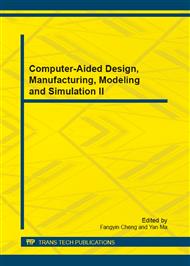p.576
p.581
p.586
p.592
p.598
p.602
p.608
p.614
p.619
Petroleum Contaminated Soil Remediation Using Six Wild Plant Species in the Yellow River Delta
Abstract:
The tolerance and remediation efficiency of six local wild plant species in petroleum-contaminated soils in the Yellow River Delta were conducted at three contaminated levels, i.e., uncontaminated soil (control), soil contamination by petroleum at 1.48% (w/w, TI), and soil contamination by petroleum at 2.96% (w/w, TII). After 60 days, six plant species showed different petroleum contamination tolerance and degradation capability in soil. The degradation ability of Setaria viridis, Alopecurus pratensis and Echinochloa crusgalli(L) Beauv was significantly higher than that of Festuca elata, Eleusine indica (P<0.05). Suaeda salsa had the least degradation ability. Plant had the high ability to degrade petroleum in the weak pollution soil, which might be due to the low re-straining effect on plant growth. Based on their petroleum contamination tolerance and removal ef-ficiency, we suggest Alopecurus pratensis, Setaria viridis, Echinochloa crusgalli (L.) Beauv and Festuca elata are suitable for petroleum-contaminated soil remediation in the Yellow River Delta.
Info:
Periodical:
Pages:
598-601
Citation:
Online since:
December 2012
Authors:
Price:
Сopyright:
© 2013 Trans Tech Publications Ltd. All Rights Reserved
Share:
Citation:


